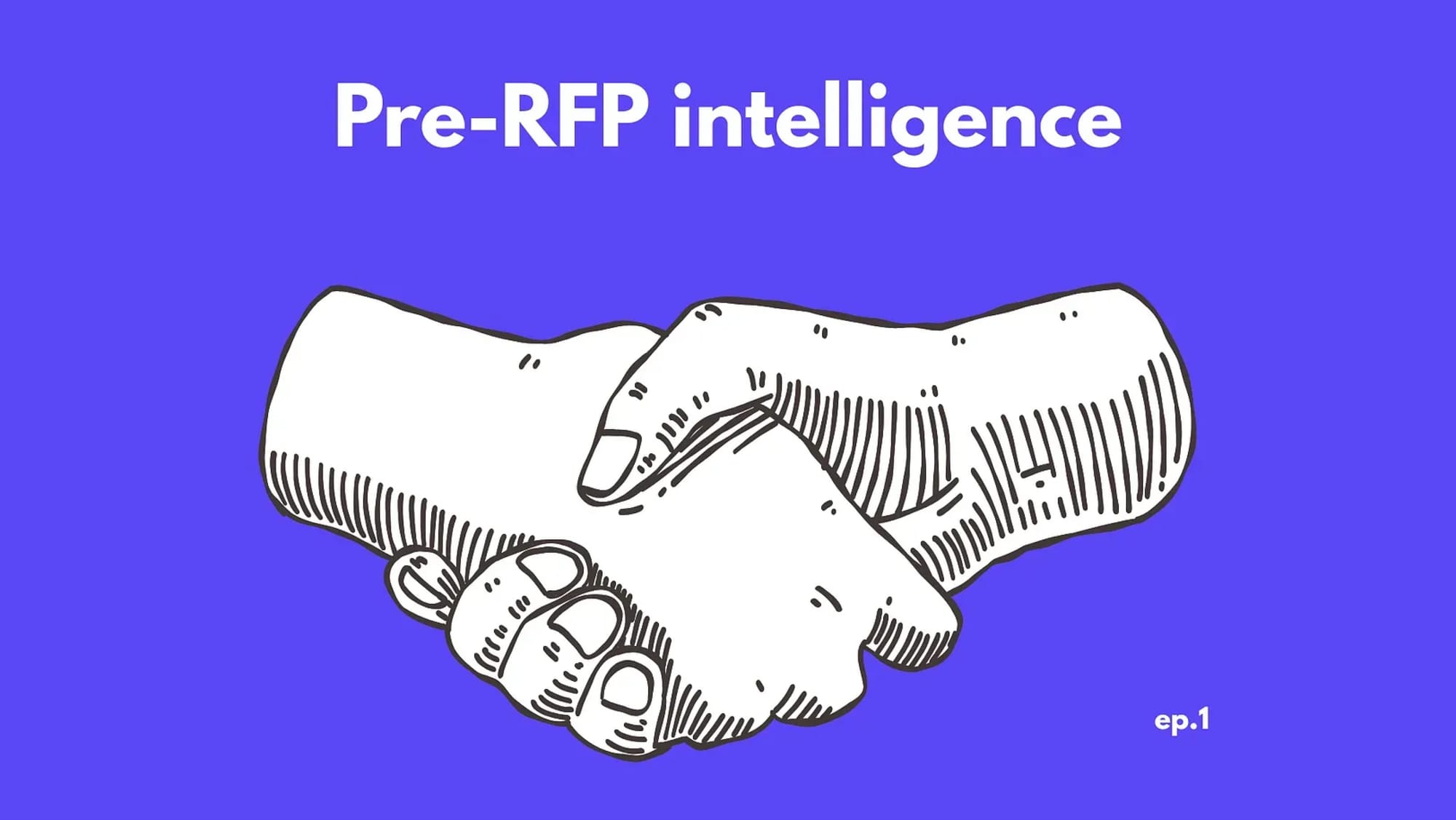Pre-RFP: The $2.3 Trillion Question

You're sitting in a Nashville hotel room at 11 PM, laptop balanced on your knees, frantically scribbling notes on hotel stationery while your team paces around, talking through what we just witnessed.
We'd just wrapped three days at APMP—basically the Super Bowl of the bid and proposal industry—and my brain was buzzing with a pattern that kept hitting us over and over:
"I wish we could have engaged earlier with the contracting officer."
We heard it from the procurement team lead. From the healthcare systems director. From the capture managers who’d been doing this for fifteen years. Same sentence, different accents—universal frustration.
Here's the thing that blew my mind: U.S. procurement (federal + SLED) alone is a $2.3 trillion market. That’s not a typo—trillion with a T. And everyone—literally everyone—is playing the game wrong.
While your competitors are out there polishing PowerPoints and color-coding compliance matrices, the actual decisions are happening six months earlier in conference rooms you don’t even know exist. Program managers are sketching requirements on whiteboards. Budget holders are having hallway conversations about priorities. The whole framework is getting built while vendors are still figuring out who to call.
By the time that project file hits SAM.gov, you're not competing for the contract—you’re auditioning for a decision that’s already been made. The “evaluation criteria” aren’t neutral; they’re breadcrumbs leading to whoever helped write them.
The procurement world spends millions on proposal software, compliance tools, and bid management platforms—all downstream solutions for an upstream problem.
One day of planning. One day of building. And we had something completely different.
Not another proposal automation tool—the market’s drowning in those.
- This was Pre-RFP intelligence.
- Relationship mapping.
- Market identification before the market even knows it’s a market.
The response was immediate—and kind of shocking. Same outreach strategy, completely different results. Instead of “thanks but no thanks,” we started getting:
“When can we talk?”
LinkedIn messages turned into calendar invites. Coffee chats turned into demos. Demos turned into our first U.S. contract—within two weeks.
That Nashville moment taught us something profound: while everyone else fights over the scraps after the RFP drops, the smart money gets in early—when the requirements are still being written.
The Industry That Forgot How to Hunt
That Nashville revelation hit us because we’d been swimming in the data for months—watching this massive industry basically ignore its own fundamentals.
Think about it: government procurement is a $2.3 trillion annual market in the U.S. alone. Add corporate procurement and you're looking at roughly $13 trillion globally.
Yet the entire vendor ecosystem is optimized for the last 10% of the process—the actual RFP response. It’s like training for the final exam while skipping all the lectures.
The numbers are wild when you dig in. The average federal contract has 4.3 bidders, but winner identification accuracy sits around 78%—just from Pre-RFP relationship mapping.
Translation: if you know who’s having coffee with whom six months out, you can often predict the winner before the competition even opens.
Meanwhile, the procurement side is equally stuck. Government contractors are drowning in 2,000+ page RFPs because they don’t have good intel on what’s actually possible—or who can deliver. Corporate procurement teams are issuing RFPs for AI tools they don’t understand, to vendors they’ve never heard of, using evaluation criteria that miss the point entirely.

The disconnect is massive—and expensive. Failed government IT projects alone cost taxpayers $18 billion annually. Corporate procurement inefficiencies add 15–20% to enterprise software costs.
Both sides are frustrated, but trapped in this formal dance that nobody really wants to do.
Here’s what nobody talks about:
The best vendors already know this. Defense primes have been doing Pre-RFP relationship building for decades.
They call it “business development” or “capture,” but it’s really about market intelligence and early engagement. Problem is, their approach doesn’t scale down to mid-market vendors—or up to the thousands of emerging tech companies trying to break into enterprise sales.
So you’ve got this massive TAM where:
- The top 1% of vendors have figured out the game
- 99% are fighting over scraps
- Procurement teams are begging for better options—but don’t know how to find them.
That’s the opportunity.
Not another proposal tool. Not a compliance checker.
A platform that democratizes what the defense primes have been doing quietly for years—getting in early, building relationships, and shaping requirements before they become requirements.
The market’s ripe for disruption—but only if you're willing to focus upstream, where the real decisions get made.
Enter the Pre-RFP Intelligence Layer
This is exactly where Cliwant flips the script.
While everyone else is building better tools for the wrong problem, we’re going upstream—where the actual decisions happen.
Our platform doesn’t just track RFPs—it identifies opportunities 3–6 months before they become RFPs.
We're talking real-time intelligence on:
- Budget allocations
- Program manager movements
- Requirement discussions in agency planning meetings
The stuff that used to require a team of BD reps with decades of insider relationships.
Here’s how it works:
Our AI continuously monitors signals across:
- Federal budget documents
- Agency strategic plans
- Personnel changes
When a new cybersecurity initiative gets buried on page 847 of a defense appropriations bill—we flag it.
When a program manager moves agencies and starts hiring for familiar roles—we connect the dots.
When agencies start hosting "industry days"—we map those conversations back to future procurement.
The real magic? The relationship layer.
We're not just telling you what’s coming—we’re showing you:
- Who’s driving it
- Who influences them
- How to get in front of them while requirements are still being shaped
Think LinkedIn meets Palantir, but focused entirely on Pre-RFP market development.
And here’s the bigger play:
We’re not just solving for vendors. Procurement teams love this too—because they get better intel upfront.
Instead of shooting blind with overly broad RFPs, they can:
- Engage relevant vendors early
- Craft smarter acquisition strategies
It’s a win-win. And it fixes the fundamental dysfunction on both sides.
That Nashville breakthrough?
It taught us that Pre-RFP intelligence isn’t just a competitive advantage—it’s the competitive advantage.
The only one that actually matters in a $2.3 trillion market where relationships drive everything.
If you’re tired of competing on price in oversaturated RFP responses… It’s time to get upstream—where the real opportunities are born.
See Your Pre-RFP Pipeline in Action.
